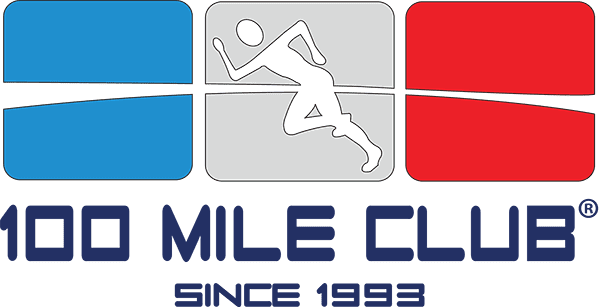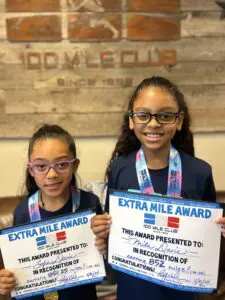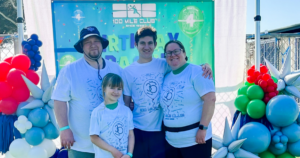
During the cold winter months when many of our schools are stuck indoors, we must get creative and find ways to provide opportunities for movement in the classroom setting.
As a 100 Mile Club School, you have access to activities, games, and lessons that can serve as mile-equivalents, and guidelines in our Program Guide and more that help you log “miles with intention“.
We are celebrating Active Classrooms Week with our partners at Active Schools, and we’re so excited to be bringing attention to the fact that active kids learn better! Follow the fun with #ThisIsYourBrainOnMovement and enjoy this this guest blog post by Julian A. Reed, Ed.D., MPH.
Move to Learn | Brain Benefits of Movement in the Classroom
by Julian A. Reed, Ed.D., MPH
Throughout my tenure as a Professor of Health Sciences at Furman University, I’ve met numerous elementary educators who share similar challenges in their classrooms.
- How can I get students moving more?
- How can I improve student behavior?
- How can I teach to meet all learning styles?
- How can I engage students with content?
- How can I also address my state’s standards?
Neuroscience findings continue to reveal the brain benefits of movement and kinesthetic learning, including increased engagement and achievement, improved behavior, and better adoption of healthy habits.
These benefits are key for improving concentration, memory, focus, and behavior, whether inside or outside of the classroom.
As an added health benefit, movement is also shown to prevent inactivity and obesity. It’s no wonder that today’s educators are looking for ways to increase the total amount of weekly physical activity for children.
Here are five ways to integrate movement into elementary classrooms. If you’re interested in a webinar on the topic, please click the link below to watch a recorded webinar.
Get flexible! Change your classroom setup.
Arrange desks in clusters to allow for easier transitions and group activities. Consider adding flexible seating options such as yoga balls and beanbag chairs to your classroom, in addition to traditional seating options. Promote and encourage self-awareness by talking with students about their seating preferences and how these preferences may support their unique learning styles and may actually help them learn.
Implement active stations around the classroom.
Encourage the use of manipulatives. Post questions on the board, and have students get up out of their seats to answer the questions directly on the board.
Use fundamental skills for transitions to different stations and to different classrooms.
Encourage hopping, skipping, and galloping when coming in from recess, going down the hall, moving between classrooms, and transitioning between classroom activities.
Although some educators assume adding movement to these sorts of activities lessens order, students typically embrace the addition of movement without issues as long as you model the actions clearly and set your expectations in advance.
When students are sitting during lunch or sitting at their desks, incorporate simple movements to get blood flowing back to the brain and heart.
More than half of our muscle mass is below the waist. Encourage movements that are easy to do while seated including pedaling, calf raises, heel raises, ankle circles, pointing and flexing the feet, and knee lifts.
Encourage frequent activity breaks. Aim to get students out of their seats and moving every 20 minutes.
Capitalize on the use of movement to reinforce difficult concepts. This may be when your students need it the most.
Educators report improvements in performance when movement is incorporated during testing periods and before assessments. Movement helps to put content into context. Try stretches, jumping jacks, and lunges.
Based on the previous suggestions for incorporating movement into your elementary classroom, how will you get your students moving today?
To watch the edWeb recording, Five Ways to Integrate Movement into Elementary Lessons, visit https://home.edweb.net/webinar/learningp320191022/.
About Walkabouts by ActivEd, Inc.
Walkabouts by ActivEd is an on-demand, online platform that activates elementary math, language, and reading curriculum with short, movement-rich lessons for elementary students. The multisensory tool is proven to boost learning for better scores and better behavior. To learn more, read the research behind Walkabouts at https://getwalkabouts.com/research/.
About the Author
Julian A. Reed, Ed.D., MPH, Founder and CEO ActivEd; Professor of Health Sciences, Furman University getwalkabouts.com




